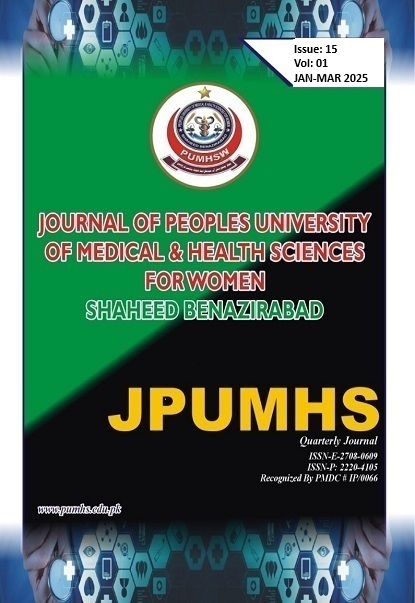BIOPSY SITE AND HISTOPATHOLOGY IN DIAGNOSING BENIGN AND MALIGNANT GASTROINTESTINAL CONDITIONS.
JPUMHS; 2025:15:01,129-136. http://doi.org/10.46536/jpumhs/2025/15.01.606
Keywords:
Gastrointestinal biopsy, Endoscopic biopsy, chronic non-granulomatous colitisAbstract
BACKGROUND: Gastrointestinal illnesses exhibit a broad range of histological findings, with
malignancies and benign ailments differing throughout age demographics. Precise
identification of biopsy kinds, locations, and histological results is essential for diagnosis and
treatment. OBJECTIVE: This study aims to investigate the distribution of benign and
malignant gastrointestinal lesions by age group, biopsy type, and histological results, as well
as their correlations. MATERIALS AND METHODS: A cross sectional study was conducted
on 159 patients undergoing gastrointestinal biopsies in Khyber Teaching Hospital, Peshawar.
Variables included patient age groups, biopsy types (colonoscopy, endoscopic), biopsy sites,
and histopathological diagnoses. Frequency, percentages, and chi-square tests were used to
evaluate associations, with logistic regression applied for malignancy prediction. RESULTS:
Most samples were endoscopic (88.7%), with the stomach site being the predominant location
(54.7%). Benign lesions constituted 87.4% of patients, whereas cancers represented 12%. The
greatest frequency of benign lesions occurred in the 20-30 age group (100% positive), but
malignancies were more prevalent in older demographics, however without any correlation
(p=0.168). Histopathologically, chronic non-granulomatous colitis (CNCG) was the most
prevalent benign finding, occurring in 43.3% of cases. Dyspepsia was a prevalent symptom,
occurring in 15.7% of cases. Substantial relationships were identified between benign status
and age group (p=0.024), however malignant status exhibited no significant link with age.
Logistic regression identified age and biopsy type were significant predictors of malignancy.
CONCLUSION: This study emphasizes the prevalence of benign gastrointestinal lesions in
younger individuals and the significance of age and biopsy type in assessing malignancy risk.
Histopathological examination is critical for correct diagnosis and clinical decision-making.
Downloads
Downloads
Published
How to Cite
Issue
Section
License

This work is licensed under a Creative Commons Attribution-NoDerivatives 4.0 International License.




